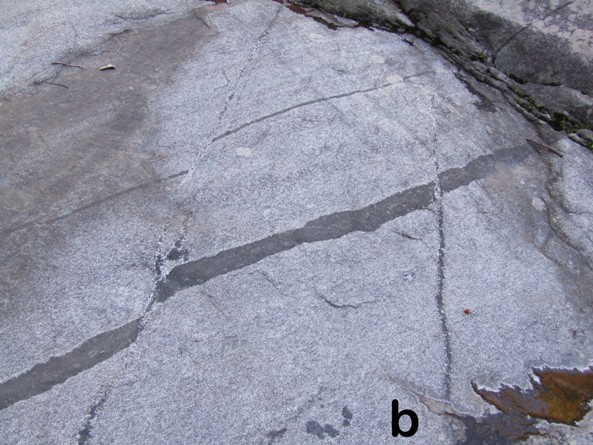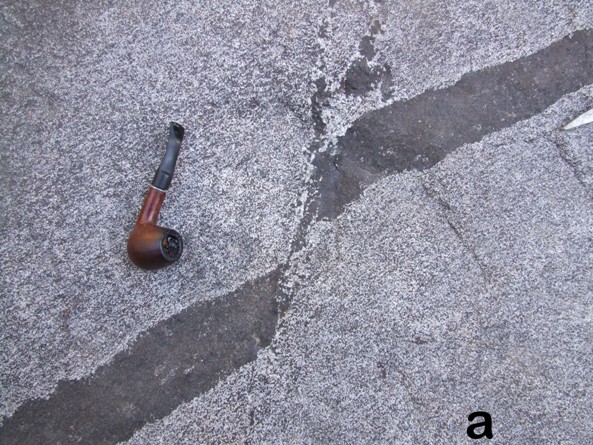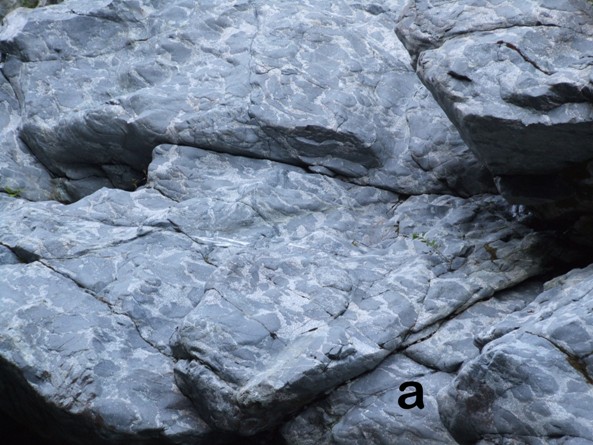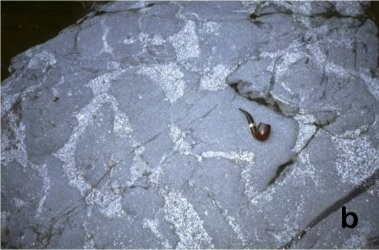The Mafic Complex
The Mafic Complex has been known since the pioneering work of Artini and Melzi (1900), who described these rocks as mafic granulites. Rivalenti et al.(1975) first recognized it as a huge igneous complex, despite the widespread recrystallization of most rocks. Using the eastern contact of the Balmuccia peridotite as reference for “the base of the intrusion,” a boundary condition we now know to be invalid, they divided the Mafic Complex along the Val Sesia profile in Basal Zone, Intermediate Zone, Upper Zone, Main Gabbro and Diorites, by analogy with the stratigraphy of well-known Layered Mafic Complexes like the Skaergaard. Although subsequent detailed field mapping (Quick et al., 1995) demonstrated that the Balmuccia peridotite does not preserve the Moho and is not the base of the Mafic Complex, the polarity of the section remains the same, with the depth of the exposure increasing to the west, approaching the Insubric Line. Geobarometry indicates that the roof of the intrusion, which corresponds to its eastern contact with the Kinzigite Formation, equilibrated at a depth of 15 to 20 km and that equilibration pressures increase monotonically at a rate of 0.3 to 0.4 kb/km toward the Insubric Line where rocks equilibrated at depths of approximately 25 km (Fig. 4, Demarchi et al., 1998).
Figure 3. The Mafic Complex in the Sesia Valley

Geologic map of the Mafic Complex in the Sesia Valley area according to Rivalenti et al. (1975). In the inset, foliation patterns simplified from Quick et al. (2003).
The large scale internal structure of the Mafic Complex (Fig. 3) is dominated by an arcuate structure centered on the village of Varallo and defined by layering, foliation and mappable units (Quick et al., 1994, 2003). Granitic and dioritic bodies do not crosscut the gabbro. Instead, their concordance with foliation and banding is remarkable and crosscutting relationships are limited to faults, scarce dikes and late-stage melt segregations. Paragneiss septa derived from the Kinzigite Formation and granitic to dioritic bodies are traceable for kilometers around this arcuate structure without major breaks although they are increasingly attenuated with depth in the complex. In fact, disruption of the internal structure of the Mafic Complex is remarkably minor considering that the complex has been exhumed from a depth of >15 km and rotated 90°. Most faults displace mappable units and/or the roof of the Mafic Complex less than 100 m.
Figure 4. Equilibration pressure

Equilibration pressure vs. distance from the Kinzigite Formation-Mafic Complex contact south of the Sesia River (modified from Demarchi et al., 1998).
Isobars in the complex cut across the arcuate structure and parallel the contact with the Kinzigite Formation south of the Sesia River (Demarchi et al., 1998). This indicates that the gross arcuate structure was established before equilibration pressures were locked in and is, therefore, a pre-Alpine feature. In terms of pre-Alpine orientations, the gross structure of the complex would have been a trough that was roofed and flanked on the north side by the Kinzigite Formation.
Synmagmatic deformation in the Mafic Complex was first described by Rivalenti et al. (1981), who interpreted intrafolial folds and high-temperature shears in terms of slumping of cumulates onto the floor on a large magma chamber. Quick et al. (1992a) observed that similar features are present in many places south of the Sesia Valley (Fig. 5) and suggested that these structures resulted from pervasive, large-scale deformation of crystal mush. Layer-parallel stretching is evidenced by boudinage and small stretching faults. Banding is locally deformed by tight to isoclinal folds with axial planes concordant with the regional foliation and fold axes parallel the stretching lineation. Locally, undeformed, poikilitic amphibole has grown across the foliation indicating that a small amount of interstitial melt was present when the foliation formed.
Figure 5. Hypersolidus faults

Hypersolidus extensional faults at deep levels in the Mafic Complex (Sessera Valley).
Many stretching faults are healed by thin, undeformed veins of leucogabbro, which crystallized from segregations of late-stage interstitial melts. Late-stage melts have segregated into undeformed patches that crosscut foliation and fill tension gashes and pressure shadows at the ends of boudins. Analogous relationships involving charnockitic anatectic melts occur in the paragneiss septa (Fig. 9).
A general increase in strain downward in the complex is suggested by the following observations: (1) mappable units are increasingly attenuated with depth. (2) magmatic textures and structures are commonly well preserved near the top of the complex (Fig. 6) but, excluding small melt segregations, are absent at deep levels. (3) granoblastic textures and synmagmatic deformation are more abundant in the lower third of the complex.


